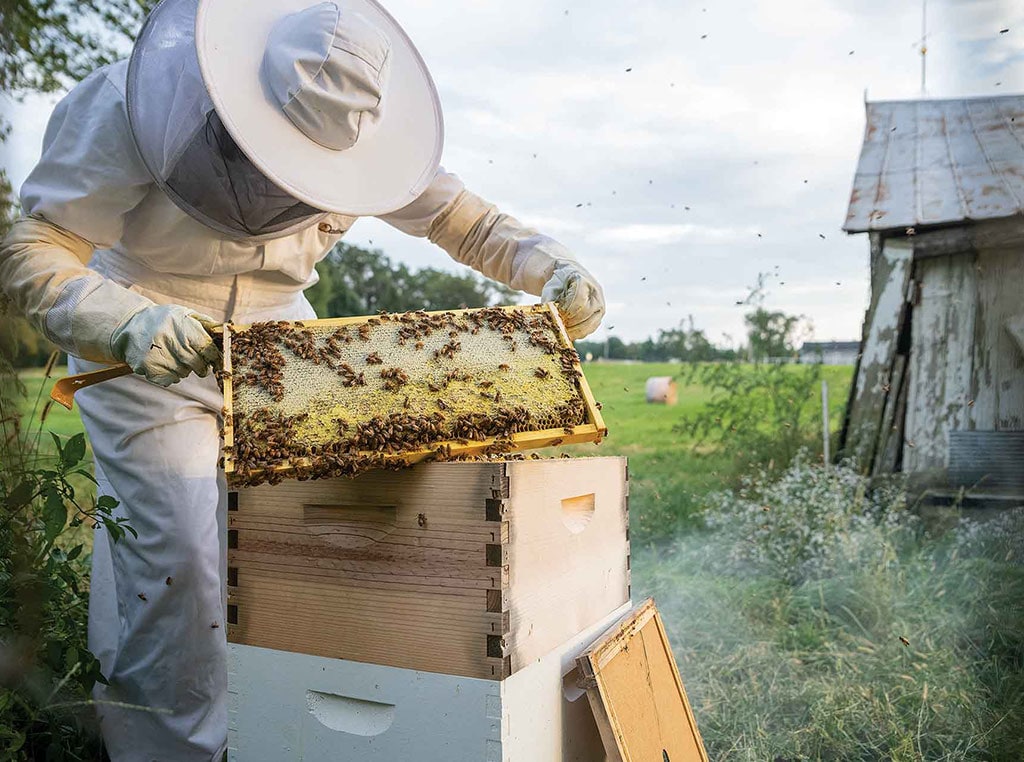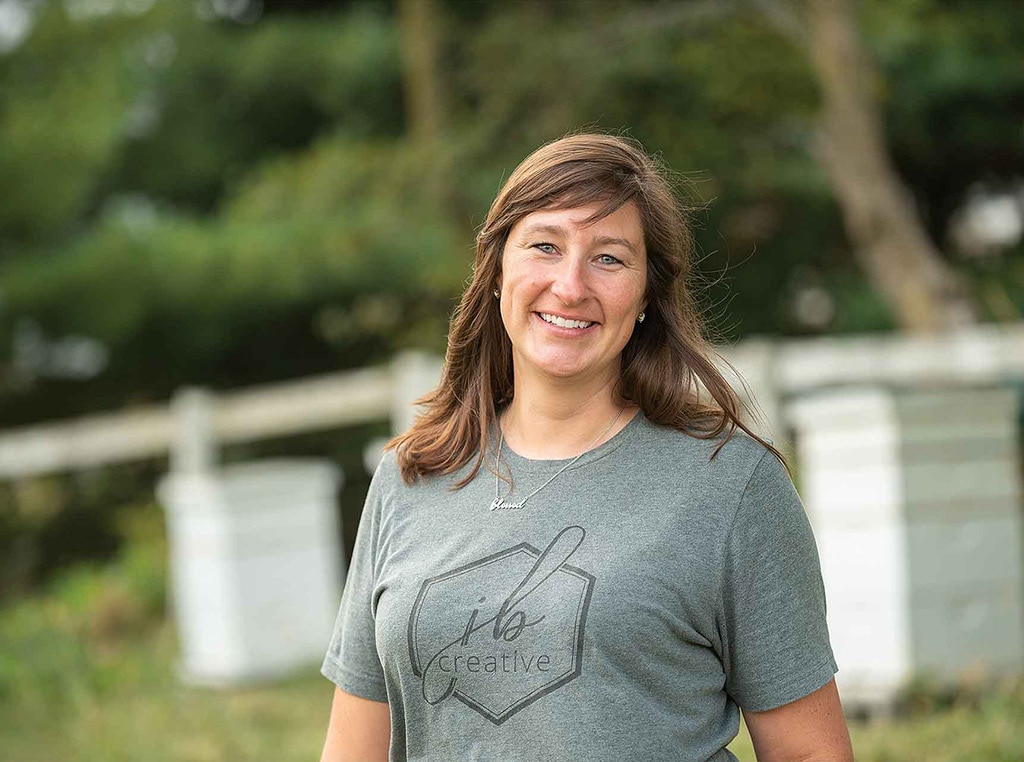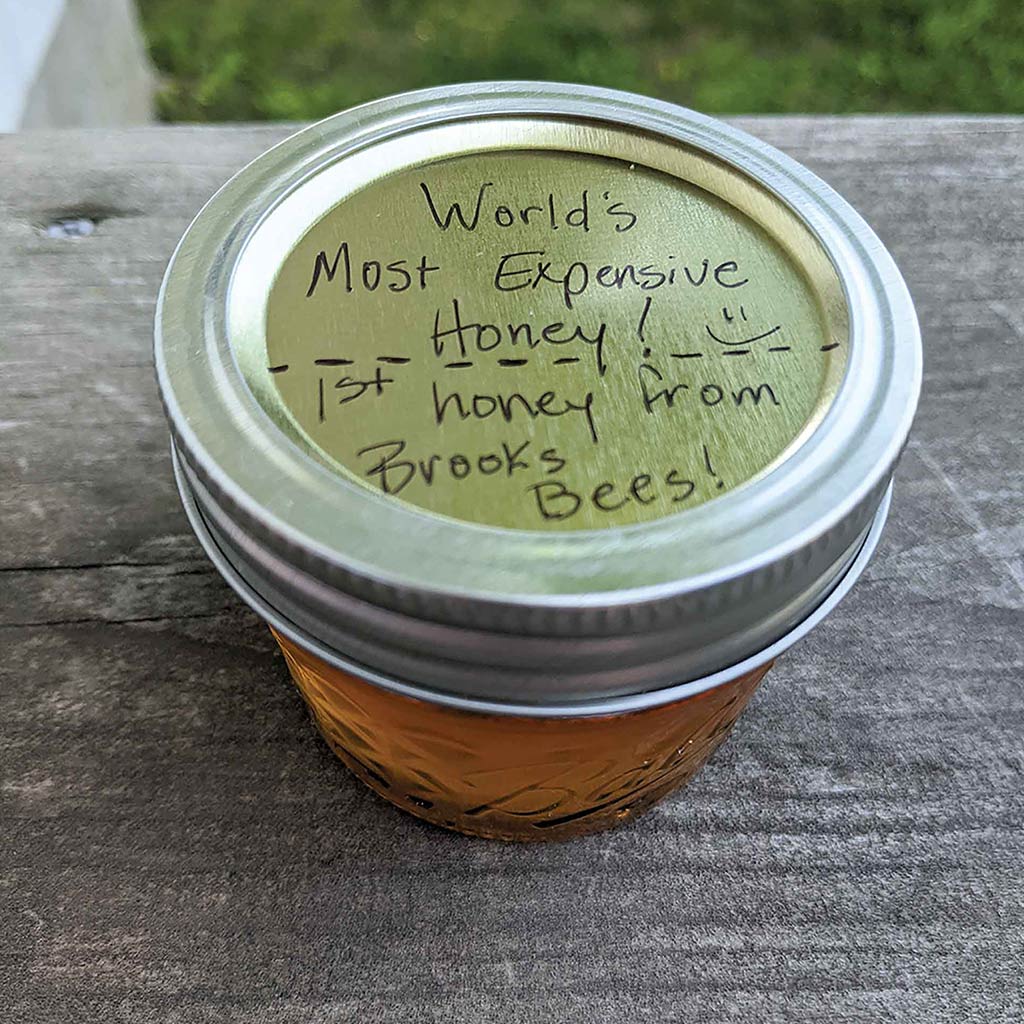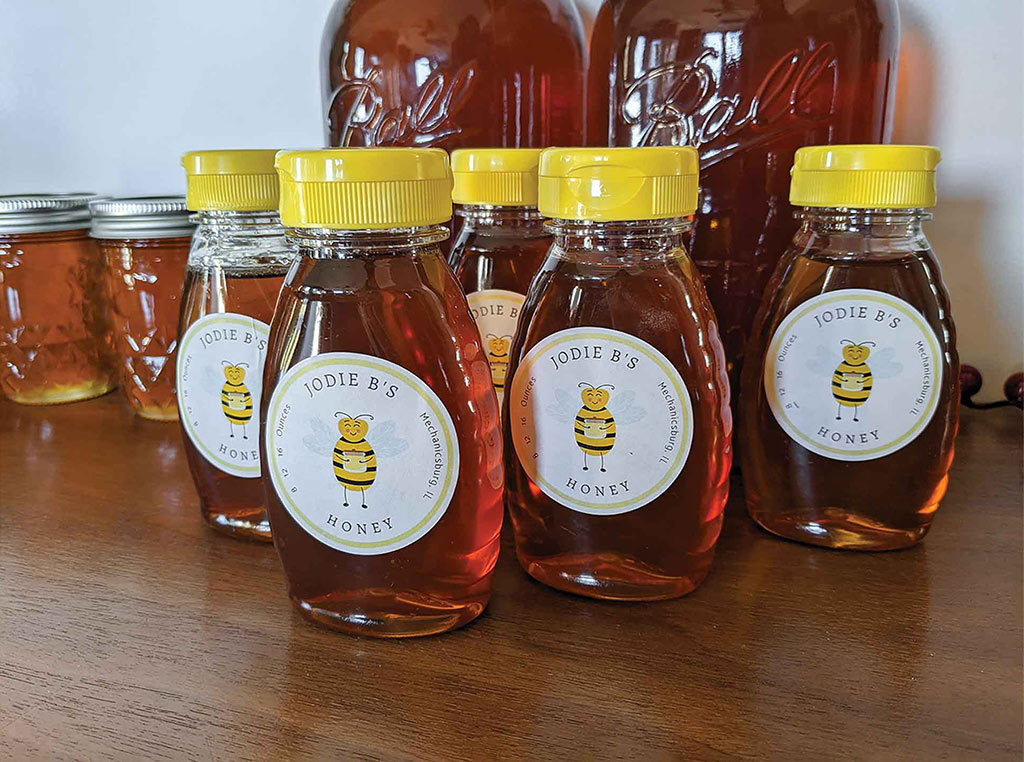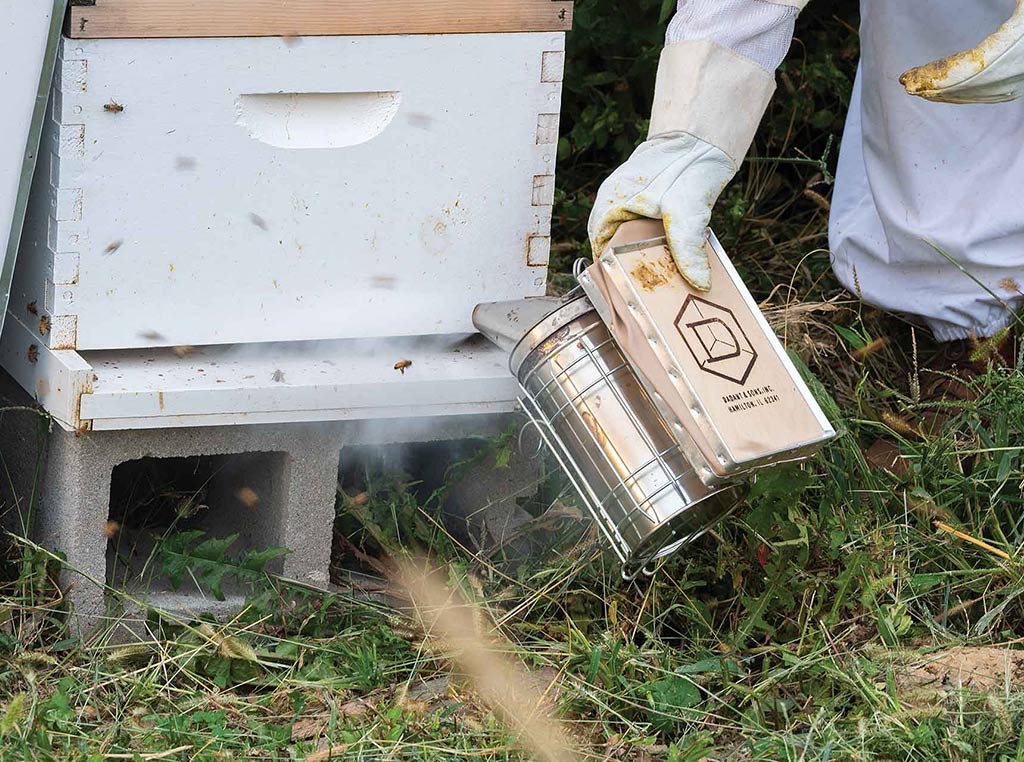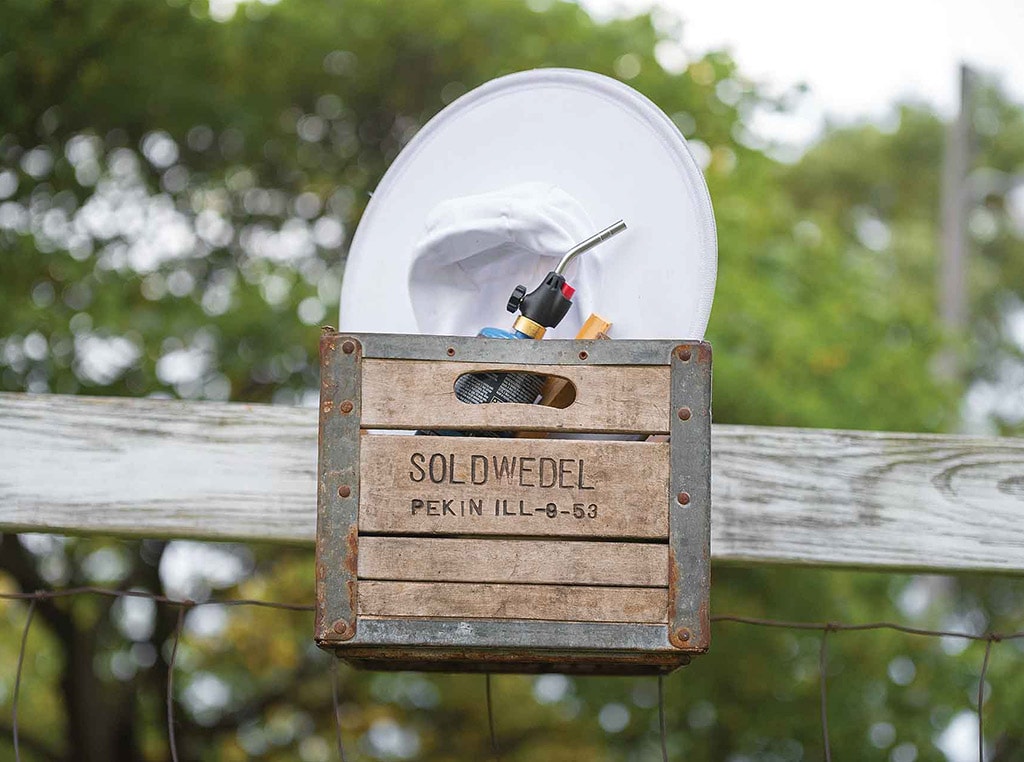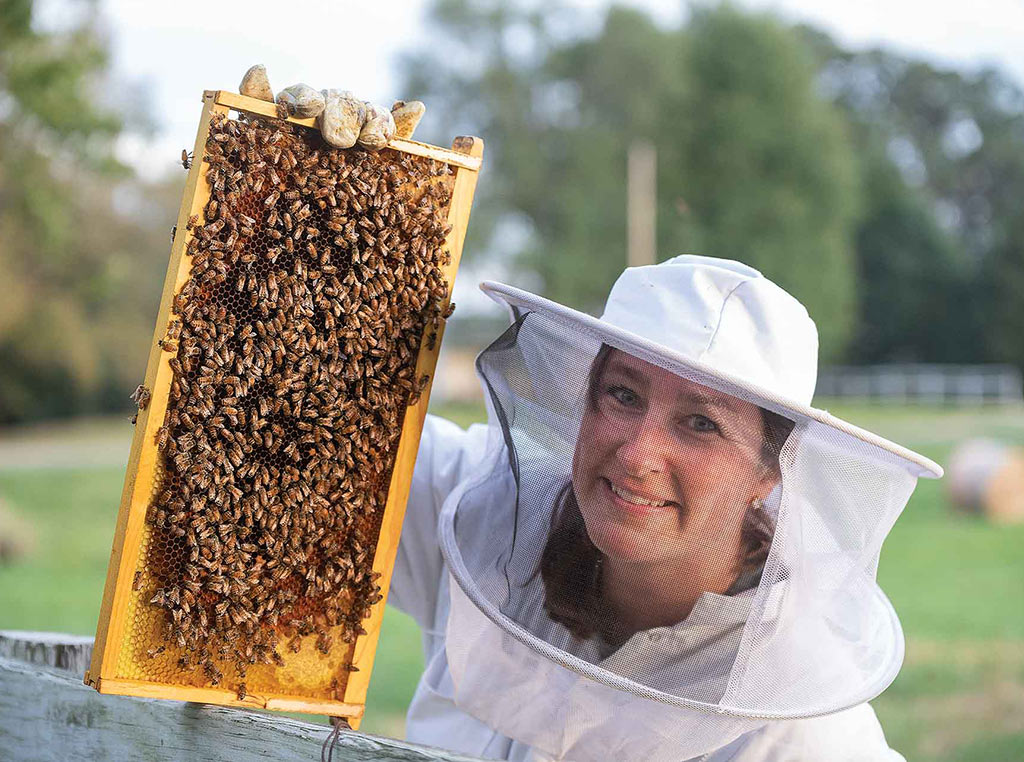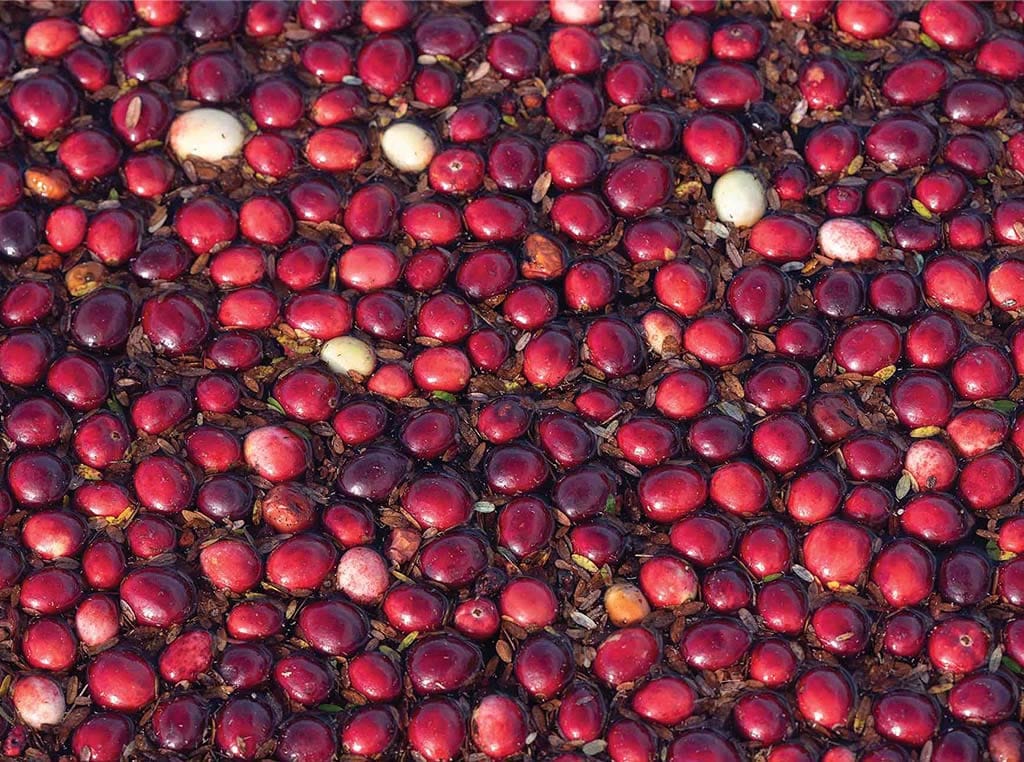Specialty/Niche June 01, 2022
What It's Actually Like to Keep Bees
.
A beginner's experience.
“When I was about four-years-old I got stung by a swarm of bees while my sister and I were playing in a pile of beans,” says Jodie Brooks of Mechanicsburg, Ill., now in her 40s and her second year of beekeeping. “My family thought I was crazy when I told them I was thinking about keeping bees.”
Rightfully terrified of bees for most of her life, Jodie’s career in agricultural communications boosted her awareness of honeybees and eventually piqued her interest in keeping bees herself.
“I had been thinking about it for a couple years. I was just curious,” Jodie explains. “But I had no clue where to start.” So, she called a friend who was already keeping bees.
“I asked him if he’d like to keep a hive at our farm so I could watch and learn when he came out through the season,” says Jodie. She also knew watching him work with the bees from a safe distance would help her get over her fear of being stung again.
Luckily, he had just caught a wild swarm that needed a new home. As the hive established itself in the pasture out her kitchen window, Jodie was hooked. She took classes from the Illinois State Beekeepers Association the next winter and ordered equipment to keep her own hives in 2021.
Above. Jodie had so much fun in her first year of beekeeping, and her friends and family also took interest asking how her bees were all through the season. She was thrilled to share the more than 90lbs. of honey with them. The six-sided honeycomb shape is one of the strongest in nature. Seeing a lot of symbolism in this, Jodie used it as the base for her company's logo.
All in. Deciding on two hives so she could more easily tell if something went wrong, she filled her new, bright white boxes with a few thousand worker (female) and drone (male) bees and one queen (female with fully developed reproductive organs) bee each. And something did go wrong right away.
“I put the bees in and then uncorked the queen’s separate box. Well, I should not have let her out,” Jodie recounts, able to laugh about it now. “I saw one queen immediately on the ground; they had carried her out.”
Not exactly sure how to fix the problem nor certain if the same thing had happened in the second hive, Jodie called her friend for help. He got her a new queen for the first hive and told her to watch the second.
“He told me to not kill this one, ha! And he said I should let the worker bees eventually release her.” He was right. “I think part of why I love all of this is they’re so orderly. Amidst all the chaos around them, inside that hive was then perfectly aligned, orderly, and organized.”
It became obvious the other hive was, in fact, without a queen because the same orderliness was not true. “I kept an eye on it. I would open it and pull up the frame. I knew it was supposed to be one perfect egg in one perfect, hexagonal cell— totally orderly. But instead, I had five to eight eggs in a cell.”
While watching that second hive and thinking it wouldn’t survive, Jodie’s friend caught another swarm. They combined it with the bees left in her hive. Later in the season, they caught yet another wild swarm and put those bees in a third set of boxes. She finished the season with three, honey-producing hives.
“It was amazing to watch every tiny little step. I was obsessed,” Jodie freely admits. “I was just soaking up every little bit, understanding how they worked and how they did things, and researching as I went.”
One of the most surprising things she learned was not found in the books and articles she read. It was the nuance between the hives.
“The hives have these little personalities. I am so fond of my first hive [with the replacement queen] because the bees are so nice. I cut my teeth with them, and they just produce an insane amount of honey. The other two are more aggressive.”
Above. When she works the hives, she smokes them with this unique tool filled with smoldering paper. Jodie says, "The theory is they think their hive is on fire, so they'll drink up a bunch of the nectar in the hive making it harder for them to sting." Jodie learned that getting stung wasn't as big of a deal as she had built it up to be in her mind. Beekeepers have many tools and tricks to keep from getting stung including wearing a full suit. When reflecting on her first year of beekeeping, Jodie couldn’t help but feel very proud and thrilled about all she overcame, learned, and accomplished directly related to the bees and in the rest of her life.
Real learnings. “I just thought I was going to get to do something cool and get honey. But then when you see all the millions of things that must happen for it to play out like that, it actually gets me emotional,” says Jodie, on the brink of proud and overwhelming tears reflecting on her accomplishments since becoming a beekeeper.
Jodie started her own company, JB Creative, two weeks before the pandemic’s initial shutdown in March 2020. That year she shadowed her beekeeper friend while she also helped her elementary-aged children learn from home and helped her husband maintain their farm while he navigated shifts in his day job.
As the pandemic waxed on, the bees unknowingly became her solace.
“As all things are going crazy around me, I just know they’ll be in there doing their thing. The way they live and reproduce, and what they produce are all just so perfect in nature. It really is fascinating. There’s a self-sufficiency that is just amazing.” She says, “It’s a place for me to go to disconnect from all the exterior stuff in life and connect with nature and reap the rewards of the honey. I can’t even say I did that. My role is just to give them an environment where they can thrive.”
Two of Jodie’s hives survived their first winter, but not her favorite hive with the replacement queen. One could take that as failure, but not Jodie.
“As I get older, I feel a lot more confident in saying, ‘I think I could do that.’ I’m less afraid of failure because I’ve done things I’ve not been good at and learned to walk away, just trying to give myself grace and embrace the imperfection of it and realizing there’s beauty in all of that. And I look at all that I’ve done in the meantime of becoming a beekeeper and can say: hell yes, I have more confidence.”
Jodie’s plan for her second season is very different than her first.
“The bees are best left to do their own thing, clearly. In my mind, they know best a lot of times, and so for me, I’m just there to make sure that they have a nice environment and have plenty of space to do what they do.”
She will happily keep jarring up their extra honey for everyone in her life to enjoy. ‡
Read More
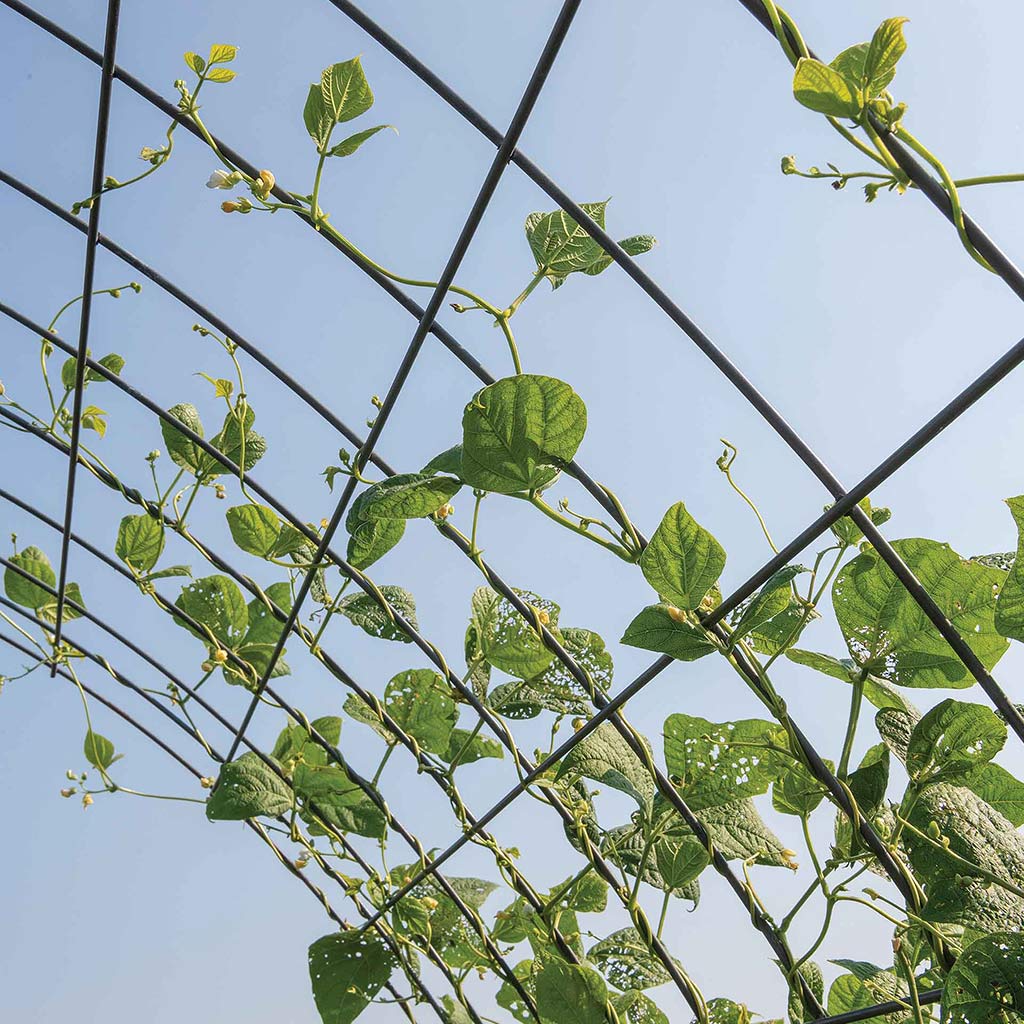
RURAL LIVING
Gardening to New Heights
Go vertical to put fun back in gardening.

